Ladies and gentlemen, it’s February. You know what that means? It’s time to get going. I can feel it, and I’ll bet you can too – that little twitch in your hand that says, “alright, baby, let’s start some tomatoes!”
February typically marks the beginning of the big seed starting effort around here. Not just this year’s crop of tomatoes, but nearly all of the first round of brassicas can be started this month.
So, let’s get going. Spring is on its way.
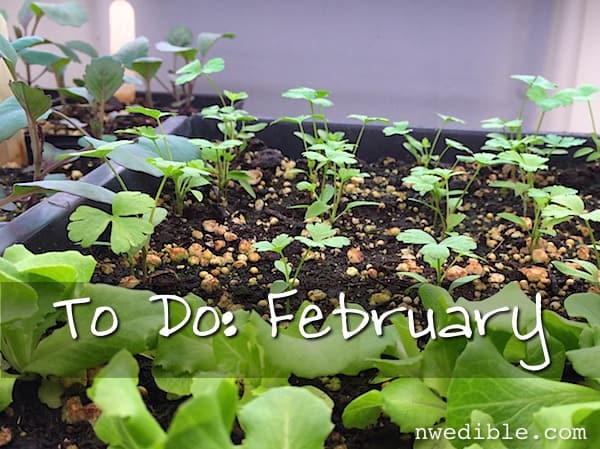
Plan and Purchase
No pressure, but by now you should have a pretty good idea what you will be growing and where you will be growing it.
Seeds
If you’re still finalizing your seed order, check out my favorite seed house and a periodic sponsor of this blog, High Mowing Organic Seeds. They have a nice variety of high germination, 100% organic, verified GMO-free seeds. They now offer free shipping! Yay!
Feeling overwhelmed? Here’s a few resources for planning your garden and your seed order this year:
- Seed Selection Made Very, Very Simple
- How To Pick Your Vegetable Seeds Without Going Crazy
- How To Make Succession Planting and Year-Round Gardening Really Work
- Garden Yield Planning
Order your seed potatoes ASAP for best selection. Popular and rare varieties tend to sell out quickly. If you’re a true potato junkie, Irish Eyes has the widest selection around, all certified organic.
Perennials
If you didn’t do it last month, now’s the time to order perennials, like fruit trees, shrubs, rhubarb and asparagus. These should be planted as soon as they arrive, while still dormant.
This month you’ll start to see bare-root fruit trees, bushes and canes at nurseries, but the best selection will be mail order. I have ordered from Raintree Nursery many times (their catalog is total garden porn) and always been happy with the plant quality and customer service. Readers have also recommended Cloud Mountain Farm as a good supplier of fruit trees.
- Rhubarb Crowns
- Asparagus Crowns
- Bare Root Fruit Trees
- Bare Root Fruit Bushes
- Bare Root Cane Fruit & Vines
- Hop Rhizomes
Gear
All this seed starting info assumes you have what it takes to grow great seeds into great little seedlings. And, sad to say, in the Pacific Northwest that’s not just a South facing window.
- Read my opinionated take on which seed starting supplies are worth your hard-earned cash and which aren’t.
- I’ve been getting a ton of questions about grow lights lately! I upgraded last year to a T5 grow light (pictured below) and it’s been a dream. I’ll do a full post about my new grow light setup soon, but this is the grow light I have and it’s awesome.
Prepare and Prune
This is a great time to start thinking about warming your soil where you’ll be planting heat lovers like tomatoes and peppers.
If you aren’t opposed to using plastic in the garden, pin black plastic down over your beds for extra heat and weed suppression. Clear plastic actually warms soil even better, but allows weeds to germinate like crazy. If you plan to leave plastic on your beds the whole season and just plant through it, make sure you have a soaker hose or something to irrigate under the plastic.
You can also erect your low tunnels and cloches at this time of year, to help winter-water-logged soil dry out and warm. By the time your transplants are ready, the soil will be too.
There’s still time to handle dormant season pruning and spray fruit trees with dormant oil to control mites, scale and overwintering buggies. See the January To Do list for a recipe for my DIY All Natural Dormant Oil Spray For Fruit Trees.
Start Indoors
Whoa boy, here we go.
Perennials
- Asparagus: if you want to try growing asparagus from seed, you have to start now – the seeds can take almost a month to germinate. Personally, I’d buy 1 year old crowns from a good nursery or mail order seed company.
- Artichokes: I grow Green Globe and Violetta.
- Strawberries: I wouldn’t bother starting common garden strawberries from seed, but some of the rare alpine types might be worth a go from seed.
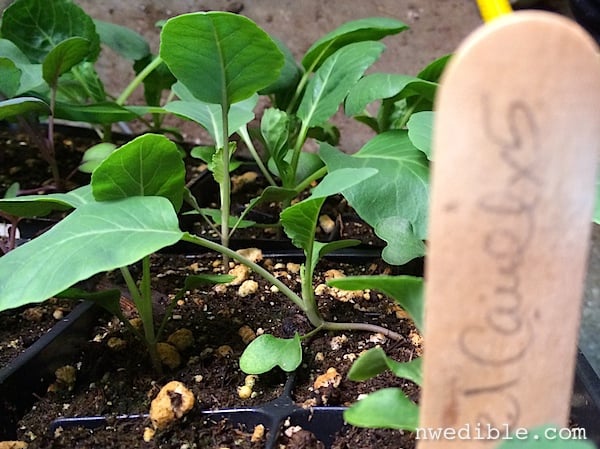
Brassicas
- Broccoli: early varieties should be started under lights this month for planting out under a cloche at the beginning of April. All around, I really like Belstar. It’s just a solid broccoli all year round. Some seed companies do broccoli blends, which are useful to home gardeners who don’t want to worry about succession planting. Territorial offers a good one.
- Brussels Sprouts: early varieties should be started under lights mid-month for planting out under a cloche at the beginning of April. I prefer Brussels Sprouts as a cool season crop, and will start them in June to mature in mid-September for harvest through fall and winter.
- Cabbage: Be very careful about variety selection here. You want an early cabbage with a maturity date of around 60-80 days. The really long maturing cabbages are better suited for fall. Farao was the standout variety in my garden last year. Hands down the best spring cabbage I’ve ever eaten. Start under lights mid-month for planting out under a cloche end of March/ beginning of April.
- Cauliflower: A bit more finicky than other brassicas, give special attention to your cauli seedlings with consistent moisture and lighting and regular organic feeding or slow release fertilizer in the grow medium. Early varieties should be started under lights late this month for planting out under a cloche at the beginning of April. I like Snowball, and Romanesco did very well for me last year too.
- Kohlrabi: I’m growing Lech this year, which performed better for me last year than any spring kohlrabi I’ve yet tried. I still find this this crop easier to grow for fall (use a large hardy kohlrabi like kossak for that) but Homebrew Husband adores kohlrabi so I’m trying to grow more of it.
- Kale and Collards: If you want early cooking greens you can start them now. If your space under lights is limited, wait and sow them out directly under a cloche next month. Both these crops germinate and grow well, even in cool soils. I’ll grow collards in the fall (champion is a fine vates-type) but I’ve already got my lacinato kale going from saved seeds.
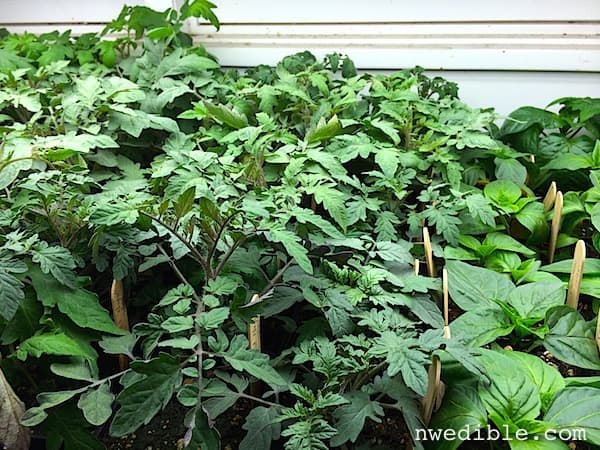
Nightshades
- Tomatoes: If you don’t mind fussing with your tomatoes and if you have good strong grow lights and if you are planning on season extension, you can start your toms in February with plans to up-pot to gallons if necessary and transplant to a pre-warmed, tunnel-cloched bed in late April, depending on weather. If you just don’t want to put that much work into it, wait a month. I’ve had good results with Moskvich, Striped Roman, Amish Paste and most of the cherry-types. In a recent discussion on my Facebook page, many people weighed in with their favorite tomatoes and now I want to grow all the tomatoes.
- Hot and Sweet Peppers: I start these at the same time as tomatoes, knowing they will need more babying than ‘maters and will take longer to grow big. That extra grow-time on the bench is fine, since peppers can’t go out to the garden until June some years. I consistently have the best luck with King of the North bell peppers.
- Eggplant: How many eggplants are you really gonna grow? Give these another month or two before you start them because they are quite tender. Or just buy quality starts in early June.
- Potato: These you don’t really “start” but you can chit your seed potatoes to get a jump start on the season.
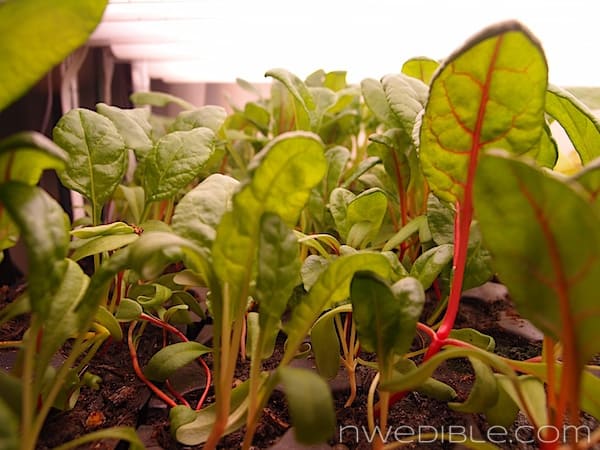
Leafy Greens and Herbs
- Chard: Start indoors now or wait a month and sow out directly. I grow rainbow chard.
- Salad Greens: Aim for a salad green sowing every month. New month? New sowing of lettuce, etc. That’ll give you edible salad greens in some stage of growth through October. It’s still quite early, so stick to the cool-weather cultivars like Winter Density.
- Spinach: Updated advice: I have now decided spinach is not a good crop to start indoors. You go right ahead if you want, but I recommend broadcast sowing this crop outdoors for better results.
- Herbs: now is the time to sow seed for parsley, lemon verbena, chives, fennel, borage, chamomile, chervil and johnny-jump-ups (yes, they’re edible!)
Other Stuff
- Onions and Summer Leeks: You started these guys last month, right? If not, you’ll want to jump on it now or we’ll be buying Walla Walla sets at the nursery together. You’ll want long-day or day-neutral onion varieties if you’re in the Northwest. No short-days.
- Peas: For the earliest possible harvest, start these inside in a length of gutter. Transplant them out to a cloched bed when they are a few inches tall and plan for early peas.
Sow & Plant Outside
Seeds
- Peas: George Washington’s birthday (2/21) is the traditional time to sow peas. If the soil has warmed up and isn’t waterlogged, and if you didn’t sow peas indoors, the end of February is a good time to get them in the ground.It’s been warm and dry-ish lately, so that might be just about perfect this year. If the soil still seems really cold and wet where you are, wait a few more weeks. Pretty much all peas grow well in the Northwest. I focus on Sugar Snap types.
- Favas: Direct sow anytime. When I grow favas, I grow the huge-seeded Broad Windsor.
- Garlic: You don’t have to do this because you got your garlic in last fall so it’s already showing 6 or 7 inches of shoot, right? Right? Oh, well, not to worry! Just stick some in now. Your garlic heads will be smaller but you’ll still have homegrown garlic.
- Salad Greens, Spinach, Asian Greens & European Greens: sow out the hardiest greens under cloche for the earliest possible direct seeded new crop greens. I rolled the dice and broadcast some arugula a few weeks ago and it’s up and growing already!
- Radishes: the little globe ones. Try a pretty mix like Valentine’s Day.
- Onion Sets: for early green onions, you can plant sets now and use them before they bulb.
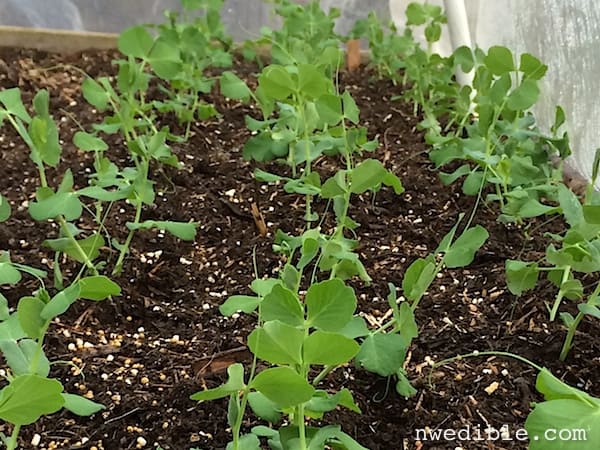
Perennials
With these perennials, pretty much if you can buy it right now, and the ground can be worked without turning to mud, you can plant.
- Bare root fruit trees: these should be put into previously prepared ground while still dormant.
- Bare root fruit bushes: These are your currants, gooseberries, blueberries, etc. Just like the trees, get these in the ground while still dormant.
- Cane fruits: Blackberries, raspberries, etc. available bare root now.
- Rhubarb crowns: These can be had by dividing established plants, ordered online, or purchased at a good nursery.
- Horseradish roots: these can be invasive! It’s a good idea to plant them in a very large container sunk into the ground to control their roaming. Of course, I didn’t listen to myself, I just stuck them in the ground last spring and now the roots are as big as my wrist and I’m kinda screwed. Oh well.
- Asparagus crowns: Easier than seed, these look like shriveled up sad, brown baby octopi when you first pull them out of the bag. They’ll settle in, though, and in a few years they will be monster plants with roots 8 feet deep. Asparagus is cool like that.
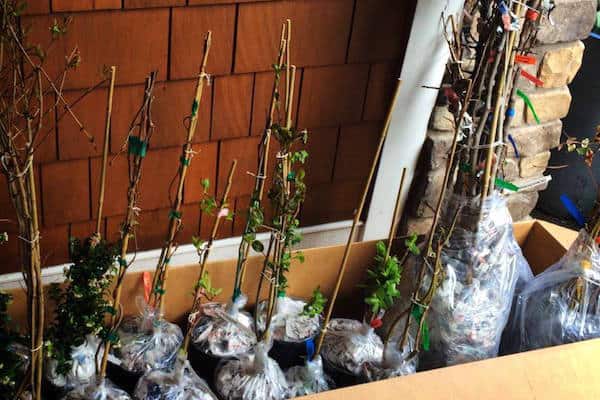
Harvest
I’ve got nothing in my garden right now but mache and kale, but maybe you do? At this time of year in the past, I’ve harvested:
- Brussels Sprouts
- Overwintering Cabbage
- Carrots & Parsnips
- Kale and Collards
- Overwintering Cauliflower
- Sprouting Broccoli
- Winter Kohlrabi
- Chard
- Leeks
- Turnips & Rutabagas
- Protected Salad Greens, Asian Greens and Euro Greens
- Jerusalem Artichokes
- Stored Winter Squash
- Stored Potatoes
- Celeriac

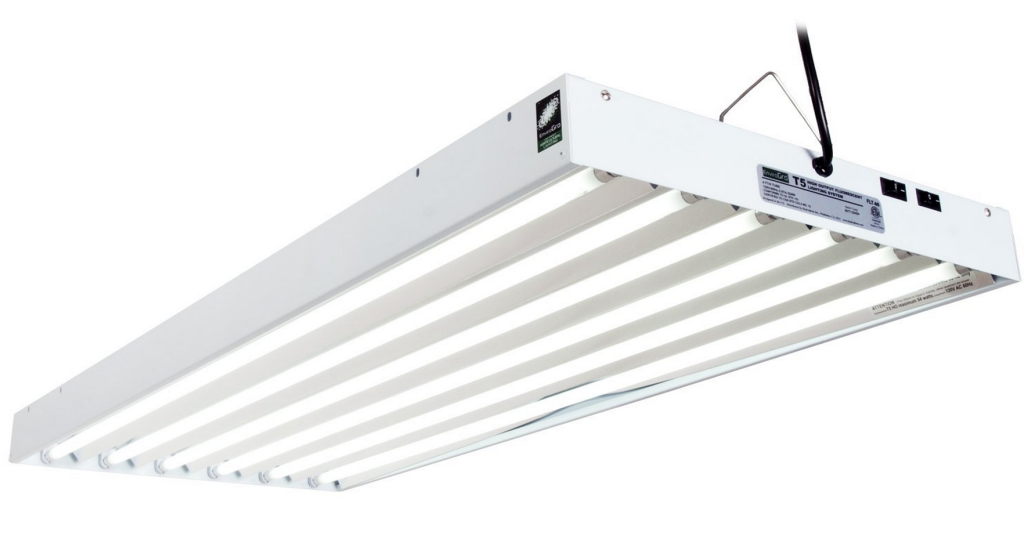
I’ve got onions and parsley under the lights now. Nothing up yet, but they were just sown last week. I meant to get at it sooner, but I got sick. Starting lots this week. Leeks, lettuce, kale, celery and rosemary. I was planning to start spinach, too. Why don’t you recommend starting it indoors anymore? I don’t have cloched beds to sow into. All my beds are currently covered in straw and leaves from the fall. We have a LOT of neighborhood cats, and this has worked this winter to keep them out of my beds.
It’s not that it’s “incorrect” to sow spinach indoors, but I’ve just personally found this is one of those crops that produces less the more I finesse it. It’s just easier for me to just toss a handful of hardy seed out oven my garlic when I plant it in the fall, then harvest in early spring as an overwintering crop. But if sowing spinach indoors works for you, power on! 🙂
My husband and I spent the last week upgrading our in-ground garden to a raised bed garden. I was so tired of water, mulch, soil and seeds washing off the top of my rows. I ‘ll be able to do companion planting now and keep my soil in one place, finally! I started my tomatoes and peppers from seed on January 2nd. I’ll be potting them up to 4 inch pots soon. What do you use as a seed starting medium? Also, what kind of plastic holder are you using to start your seeds? They look very cool! Your seedlings look great, BTW!
Color me envious. We here in zone 4 are still so very far away from starting much of anything. I’ll live vicariously through you for a few more months!
Zone 3 here, so I completely relate. I read about sowing peas outdoors on February 21st and laughed out loud – on February 21st we’ll probably still have 3 feet of snow on the garden! Why we choose to live here I’ll never know…
I am going to try my hands at starting some seeds this month, but my first priority is making sure everything I planted last year (that survived) is appropriate weeded (read: saved from encroaching blackberry) and mulched. I learned a lot last year about the importance of keeping up with one area before moving on to another.
During last week’s crazy warm spell, I spent a few hours clearing around trees and shrubs that I put in last year and putting down a thick layer of clean hogsfuel. Now I can feel better about starting new projects!
I am just going to pretend I did not see that. The climate envy gets too serious, not to mention the envy of having (or being) handy people in the household. So far I have: checked out the huge collection of leftover seeds, filled the container for leek starts with soil, enjoyed forced hyacinths but totally failed with other forced bulbs, bought fresh grow lights but have not installed them yet. I am still enjoying the winter leisure and very busy with other things.
I have no room indoors to start seeds, so I’ll just have to wait. In the meanwhile I need to build a few raised beds…
Thanks ever so much Erica. I was in a mess with planning not knowing how to best get started. Not only have you given me a boost to get me going, but your garden planning tools are really great. I am now focused, and have listed my seeds, decided on my succession planting and instead of sketching roughly where I intend to plant things I have numbered my beds to make planning a whole lot easier. 🙂
I’m in zone 5, but I experimented with my new grow light trying to grow some microgreens. Sadly, I think I picked the wrong kind (HPS) despite some resources saying it was a better and more economical choice than the T5 fixtures. Nothing thrived and they exhibited severe phototropism (bending towards the light source) despite the lamp being quite close.
Sigh.
It’s either try it with the tomatoes and broccoli starts and hope it works or bite the bullet and get a T5 fixture. I’ve got about a month before I’d really need to decide. I think early April would be the earliest peas and broccoli could go out here (and that really varies by year), and tomatoes can’t go out until mid-May.
Anyone around here have experience with HPS grow lights? The more I dug into the research, the more I saw they were good for maintaining plantings (to some degree) but not terribly good for starts because they don’t have enough in the blue spectrum.
Non-hypothetical question: What would you do if your box of 49 plants from Raintree Nursery arrived on February 2nd but it was pouring and the ground is saturated?
First, congratulations.
Don’t worry, things are not so dire. Anything in a pot is fine. Don’t worry about them. You can plant them whenever. The bareroot plants are dormant and the roots should have arrived well wrapped with damp paper and plastic. They will stay in fine condition for several days – just keep them cool, shaded (don’t let the roots heat up!) and make sure the root packing material remains damp. If you aren’t going to have a good soil-draining sunbreak opportunity to plant between now and, oh, say Friday, I’d heel in your plants. Go get a couple bags of topsoil or compost (or dig from your property if you have some not waterlogged) and make a pile. Remove the wrapping from the plants roots but leave the branches tied. Cover up the root areas of all your trees with the big pile of compost. With a lot of plants, you might have 20 or 30 small trees sticking out of one pile of mulch. Heeled in like this, your trees will be fine for several weeks. If you have a huge (HUGE) pot you can “heel in” in a pot, too, which will make things less messy. Transplant as normal as soon as the ground isn’t saturated. Hope this helps.
Ridiculously helpful. Thank you!!!!
“I want to grow all the tomatoes” – you should put that on a T-shirt somewhere and trademark it.
I’m so glad you posted this, I almost forgot. I need to order my seeds still, I tossed 95% of my old seeds due to old age and am in dire need of new seeds. I thought I would try High Mowing seeds, but how do you know what might work well in your area since I don’t see zones on there? I’d love if you put your recommendations for cultivars somewhere. Although I am in the Bay Area, situated in the hills close to the Bay I feel like my micro climate might be similar (days don’t often peak above 70 but sunny and nights are cool 55-60 and damp with about a week of 90-100 thrown in just to make us thankful for our normal weather).
Thanks for coming back, I sincerely missed your posts.
Ah, thanks JB. Happy to be back. 🙂 Your description of your microclimate is exactly how I’d describe our Pac NW climate, except our high week is about 80-85 with 90 for maybe a day. 🙂 I think most of the varieties I recommend in the seed selection post will do well for you. You have more flexibility with melons, peppers and tomatoes, most likely. My friend Rachel of Dog Island Farm is in Vallejo and sells seedlings that do well in the Bay Area. Maybe look at what varieites she is growing too for some inspiration.
Ack! Poor us, we’re spending 5 weeks in Mexico from mid-February to 3rd week of March. Do I start tomatoes before we leave and entrust them to our house sitter? Or do I wait and just start them when we return on 3/24, knowing they’ll be late? We start them under lights and with heat mats… What do you advise?
Oh, how I sometimes wish I lived in a more mild gardening zone! I’m so jealous.
My garden is covered in snow, seed starting won’t begin for another 3 weeks, fun bare root things won’t start appearing in local nurseries until mid-April, and there’s no way I’ll be planting anything unprotected in the garden until mid-April. (Although I may build a cold frame this month to jump start the season.) Ahh, gardening in Wisconsin.
Where in Wisconsin? I’m over in the Milwaukee area.
When you mention ‘pre-warmed beds’, does that mean putting on the cloche a few days ahead of time?